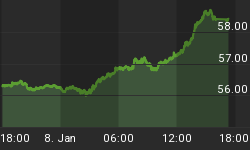With three sessions left in November, it's time to look at the stock market's historical performance in December.
As measured by mean returns, the best months for seasonal stock market trends are December (ø 1.59%), followed by July (ø 1.44%), April ø 1.35%) and January (ø 1.10%), while all other months come (far) down the scale. Even measured by the median instead of the mean (ø 1.59%), the probability for a positive monthly return (59 up, 21 down) and the respective t-score (3.97), December is leading the pack.
Table I below shows the S&P 500 monthly returns (not to be mistaken for cumulative returns over the course of the year or year-to-date returns at the end of the respective month), the number of sessions (since January 1) until the S&P 500 posted its first close above | below the previous end-of-year close, the maximum gain and the maximum loss over the course of the year (measured by the highest and lowest close over the course of the year), and the usual performance metrics (probabilities and odds) at the bottom. 'by the end of the month' in this event represents January, '2 month later (EoM)' represents February, ... until '12 month later (EoM)', representing December.
For those interested in cumulative returns as well (year-to-date returns at the end of the respective month), please find the respective stats here.
That aside, if we drill down into Decembers's weekly performance, Table II below shows the S&P 500 weekly returns during December (not to be mistaken for cumulative returns over the course of the month), the number of sessions (since December 1) until the S&P 500 posted its first close above | below the previous end-of-month close, the maximum gain and the maximum loss over the course of the month (measured by the highest and lowest close during December of the respective year), and the usual performance metrics (probabilities and odds) at the bottom.
'by the end of the week' in this event represents the first final session of the week in December (regularly the first Friday, and performance figures represent the S&P 500' performance assumed one went long on close of the last session in November and back into cash on the first Friday in December), '2 weeks later (EoW)' represents the second final session of the week (2nd Friday), ... until 'by the end of the year', representing the final session of the year, and with respect to the latter performance figures represent the S&P 500' performance assumed one went long on close of the fourth final session of the week (not necessarily a Friday if this is Christmas Day) and back into cash on the final session of the year.
For 2011, this will be:
- 'by the end of the week' Fri., December 2, 2011
- '2 weeks later (EoW)' Fri., December 9, 2011
- '3 weeks later (EoW)' Fri., December 16, 2011
- '4 weeks later (EoW)' Fri., December 23, 2011
- 'by the end of the week' Fri., December 30, 2011
Please note: That is not necessarily compliant to the ICU definition of week of month. According to ICU, the first week of the month is the first week that contains a Thursday, and a day in the week before the week with the first Thursday will be week 0.
Without question, the best week for seasonal stock market trends in December is the time frame (not necessarily a full week, might be a bit more or less) between the fourth final session of the week (regularly the fourth Friday) and the end of the year (mean periodical returns of ø 0.74%, 62 up vs. 19 down, 30 ≥ 1.0% vs. 8 ≤ -1.0% changes, and a t-score of 4.42, ).
Have a profitable week,
Disclosure: No position in the securities mentioned in this post at time of writing.


















